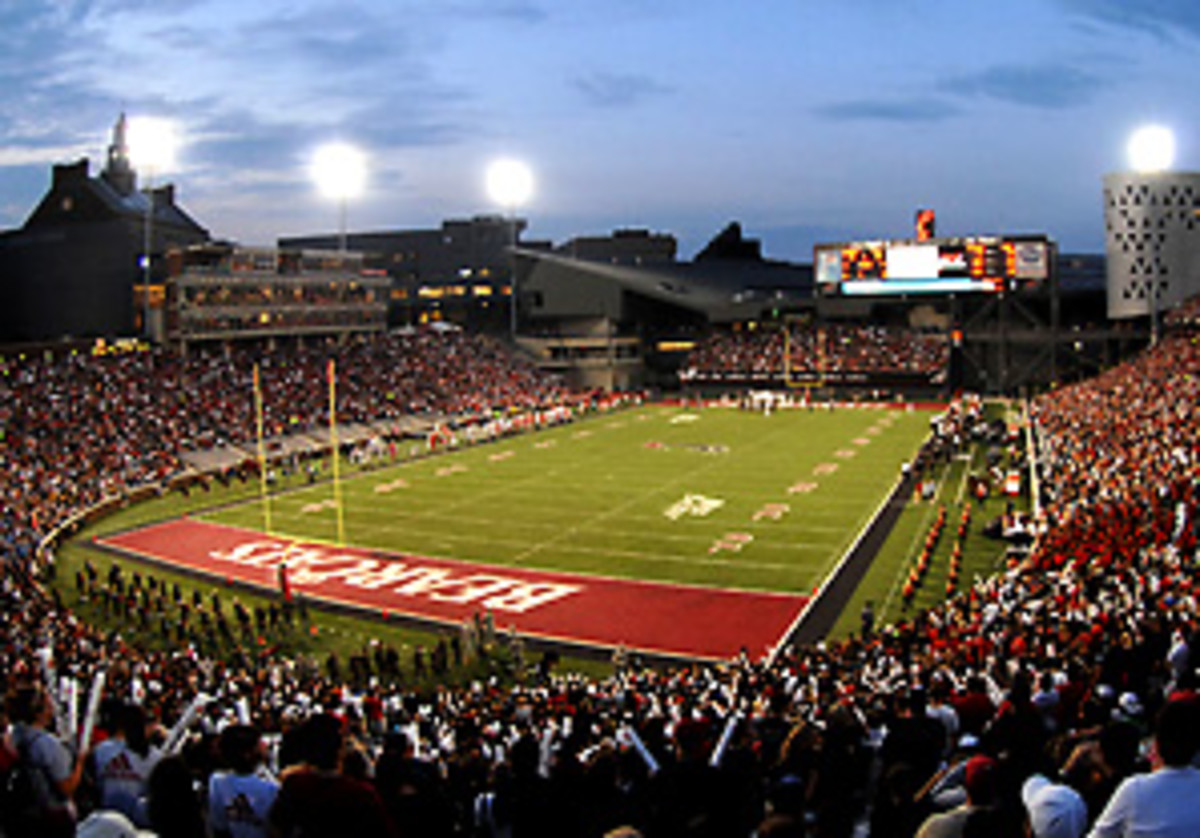In conference reshuffling game, Cincinnati left out in cold
When the music stops, all anyone wants is a chair.
What if you don't have a chair?
In the last decade, the University of Cincinnati has invested $120 million in upgrading its athletic facilities. It did so partly out of dire necessity -- the facilities were poor -- but also to compete in the Big East. When the Bearcats joined the conference in 2005, they figured they'd found a longterm home. It was the best of all worlds: A superior basketball league, the chance to rub elbows and diplomas with the likes of Georgetown and Pittsburgh and the easiest entry to the big-time of the BCS bowls.
They've upheld their end of the deal. The football team has been ranked as high as third nationally and has been the Big East champion two of the previous three years. After several down years, the basketball team returned to the NCAA tournament last year and won a first-round game before losing in Round 2 to eventual champion UConn.
It doesn't matter.
Nor does it matter that Cincinnati's TV market is a respectable 32nd. What especially doesn't matter is leaving your conference-mates in the ditch, in the dead of night. There might be a few other schools in Cincinnati's situation. None leaps to mind.
"I don't see the Big Ten expanding,'' said Bob Arkeilpane. Arkeilpane is Cincinnati's interim athletic director; he has been in the big chair for all of six weeks. What a time to be an interim athletic director at a place like Cincinnati.
"The SEC may add another team,'' Arkeilpane said. "The Big 12 might add two more.'' The ACC is at 14 now, and not eager to expand again, unless Notre Dame decides to renounce its football independence.
It's nice to suggest the Bearcats should make a run at the Big 12, but this isn't fantasy football. This is big business. UC is not a player in that game. The Bearcats are last in the Big East in football revenues. In 2010, Cincinnati football took in $13 million; Texas spent $25 million.
There is no honor among thieves, and there is no thieving like the thieving in big-time college football. It has become every school for itself, and when that happens, schools get rolled. Consider Cincinnati rolled. The Bearcats didn't invest heavily in their sports so they could compete with East Carolina.
Pushed by nervous athletic directors and abetted by greedy presidents, the unstoppable movement toward a handful of exclusionary super conferences took a mega-leap when the ACC stole Pitt and Syracuse. It was the quasi-amateur equivalent of Bob Irsay leaving Baltimore for Indy in the dead of night.
It caught Cincinnati flat-footed. The Bearcats have become the biggest boosters of a revamped Big East, mostly because they can't afford to go anywhere else. The conference's current exit fee of $5 million is not something the school would want to manage. Its athletic budget is already last among the Big East's football-playing schools.
Other Big East members are in the loop. Louisville has more money, a bigger stadium and a larger, more loyal fan base. West Virginia has all that, and a history of success. Rutgers and UConn hold the promise of the New York TV market.
"People might say it's doom and gloom, but there are other schools out there now that are in that same spot,'' Arkeilpane said.
Possibly. Other Big East schools, mostly. South Florida is desperately seeking a chair. No school has invested as much -- or been as football-successful recently -- as Cincinnati.
The conference shuffle has the Big East scrambling to recruit the likes of Navy and Boise State. East Carolina has applied for membership. The BCS, if there is a BCS after all this dancing plays out, will not be impressed. And the University of Cincinnati and its $120 million will have its nose pressed against the Big Time window.
Betrayal comes with its own cost. Cincinnati knows that now. Better than most.





